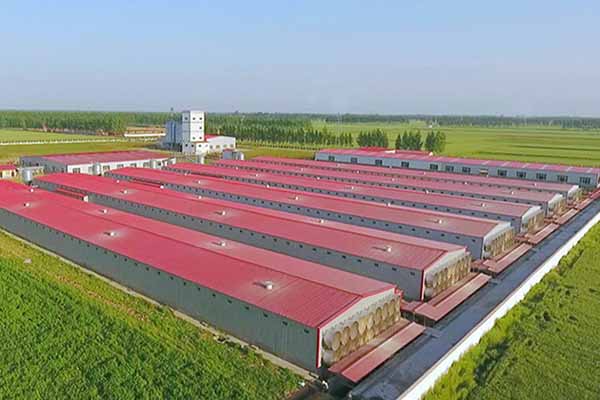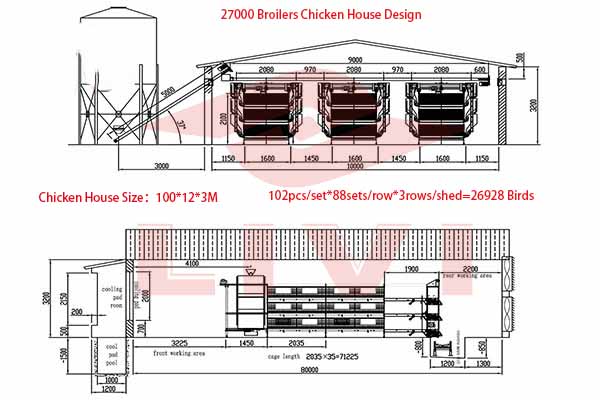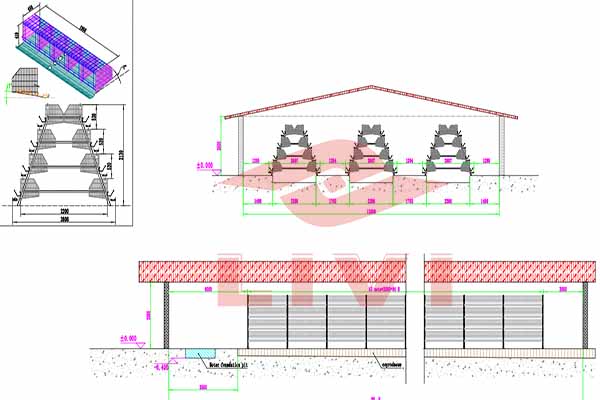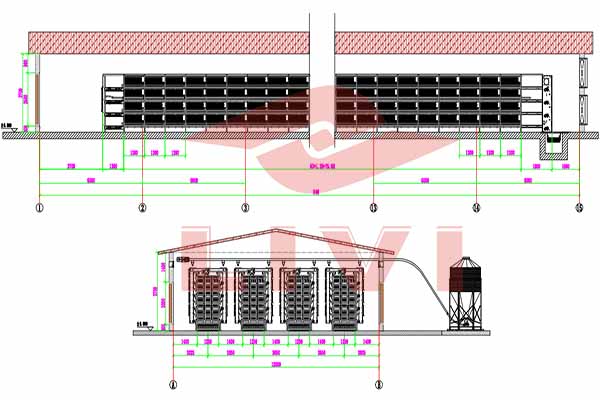Optimizing Layer Cages for 30,000 Birds in Tanzania: A Comprehensive Guide
Understanding the Scale of Layer Caging in Tanzania
In Tanzania, the poultry industry has been experiencing significant growth, with layer farming being a vital component. With the aim of increasing productivity, many chicken farmers are looking to accommodate 30,000 birds in their layer cages. This article provides insights into the best practices for layer caging at this scale.
Key Considerations for Layer Cages for 30,000 Birds
To ensure the health and productivity of 30,000 birds, it is crucial to consider the following factors:
- Space Allocation: Each bird should have at least 0.5 square meters of space. This ensures comfortable living conditions and reduces the risk of disease.
- Airflow: Proper ventilation is essential to maintain air quality and prevent the buildup of harmful gases.
- Feeding Systems: Efficient feeding systems should be in place to ensure that all birds receive adequate nutrition.
- Water Supply: A reliable water supply is necessary for both drinking and hygiene purposes.
- Health Management: Regular health checks and disease prevention measures are crucial for maintaining a healthy flock.
Layer Caging Solutions for 30,000 Birds in Tanzania
To accommodate 30,000 birds, it is advisable to use automated layer cages. These cages offer several advantages:
- Efficiency: Automated systems help streamline operations, reducing labor costs and increasing productivity.
- Comfort: Birds in automated cages enjoy a comfortable living environment, which leads to better egg production.
- Hygiene: Easy-to-clean designs minimize the risk of disease outbreaks.
A typical setup for 30,000 birds would involve:
– 15,000 cages: Each cage can house 2 birds.
– Automated feeding systems: Ensure consistent nutrition for all birds.
– Watering systems: Provide a constant supply of clean water.
Case Study: Success Story in Tanzania
A Tanzanian poultry farmer successfully managed to house 30,000 birds using automated layer cages. The farmer reported a 15% increase in egg production and a 20% decrease in disease-related deaths within the first year of implementation.
Conclusion
Implementing layer cages for 30,000 birds in Tanzania requires careful planning and consideration of various factors. By choosing the right caging system and maintaining proper management practices, poultry farmers can significantly improve their productivity and profitability.
Get Your Free Design and Quotation Today
Are you a poultry farmer or investor looking to implement layer cages for 30,000 birds in Tanzania? Contact us today to receive a free, personalized design and equipment quotation from LIVI Machinery. Our team of experts is ready to help you achieve your goals.





